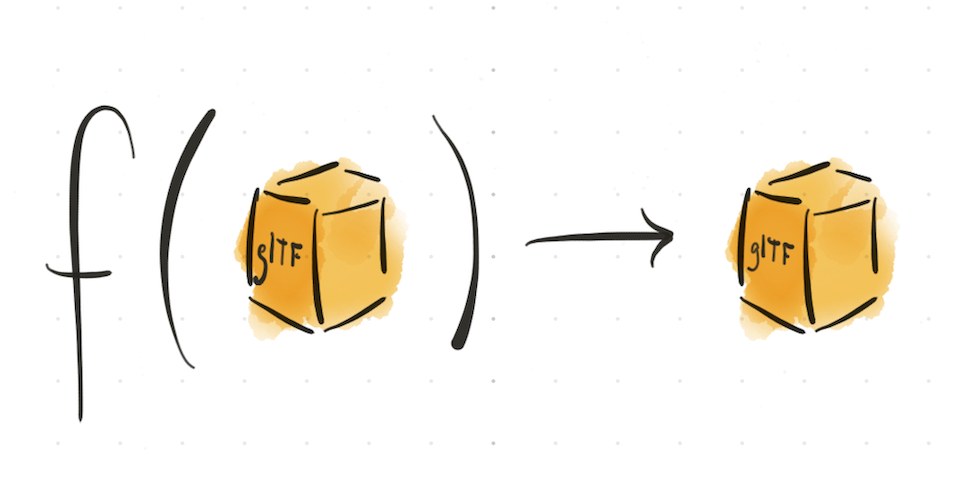Camera
Hierarchy
- EventDispatcher
- GraphNode
- Property
- ExtensibleProperty
- Camera
Static properties
Constants.
Properties
Methods
Floating-point aspect ratio of the field of view. When undefined, the aspect ratio of the canvas is used.
Floating-point aspect ratio of the field of view. When undefined, the aspect ratio of the canvas is used.
Makes a copy of this property, with the same resources (by reference) as the original.
Copies all data from another property to this one. Child properties are copied by reference, unless a 'resolve' function is given to override that.
Dispatches an event on the GraphNode, and on the associated Graph. Event types on the graph are prefixed,
"node:[type]".
Removes both inbound references to and outbound references from this object. At the end of the process the object holds no references, and nothing holds references to it. A disposed object is not reusable.
Returns true if two properties are deeply equivalent, recursively comparing the attributes of the properties. Optionally, a 'skip' set may be included, specifying attributes whose values should not be considered in the comparison.
Example: Two Primitives are equivalent if they have accessors and materials with equivalent content — but not necessarily the same specific accessors and materials.
Returns an ExtensionProperty attached to this Property, if any.
Attaches the given ExtensionProperty to this Property. For a given extension, only one ExtensionProperty may be attached to any one Property at a time.
Lists all ExtensionProperty instances attached to this Property.
Returns a reference to the Extras object, containing application-specific data for this Property. Extras should be an Object, not a primitive value, for best portability.
Updates the Extras object, containing application-specific data for this Property. Extras should be an Object, not a primitive value, for best portability.
Returns true if the node has been permanently removed from the graph.
Returns the name of this property. While names are not required to be unique, this is encouraged, and non-unique names will be overwritten in some tools. For custom data about a property, prefer to use Extras.
Sets the name of this property. While names are not required to be unique, this is encouraged, and non-unique names will be overwritten in some tools. For custom data about a property, prefer to use Extras.
Returns a list of all properties that hold a reference to this property. For example, a material may hold references to various textures, but a texture does not hold references to the materials that use it.
It is often necessary to filter the results for a particular type: some resources, like Accessors, may be referenced by different types of properties. Most properties include the Root as a parent, which is usually not of interest.
Usage:
const materials = texture .listParents() .filter((p) => p instanceof Material)
Specifies if the camera uses a perspective or orthographic projection.
Specifies if the camera uses a perspective or orthographic projection.
Floating-point horizontal magnification of the view, and half the view's width in world units.
Floating-point horizontal magnification of the view, and half the view's width in world units.
Floating-point vertical magnification of the view, and half the view's height in world units.
Floating-point vertical field of view in radians.
Floating-point vertical magnification of the view, and half the view's height in world units.
Floating-point vertical field of view in radians.
Floating-point distance to the near clipping plane.
Floating-point distance to the far clipping plane. When defined, zfar must be greater than znear. If zfar is undefined, runtime must use infinite projection matrix.
Floating-point distance to the near clipping plane.
Floating-point distance to the far clipping plane. When defined, zfar must be greater than znear. If zfar is undefined, runtime must use infinite projection matrix.

Made by Don McCurdy. Documentation built with greendoc and published under Creative Commons Attribution 3.0.
Cameras are perspectives through which the Scene may be viewed.
Projection can be perspective or orthographic. Cameras are contained in nodes and thus can be transformed. The camera is defined such that the local +X axis is to the right, the lens looks towards the local -Z axis, and the top of the camera is aligned with the local +Y axis. If no transformation is specified, the location of the camera is at the origin.
Usage:
const camera = doc.createCamera('myCamera') .setType(GLTF.CameraType.PERSPECTIVE) .setZNear(0.1) .setZFar(100) .setYFov(Math.PI / 4) .setAspectRatio(1.5); node.setCamera(camera);References: